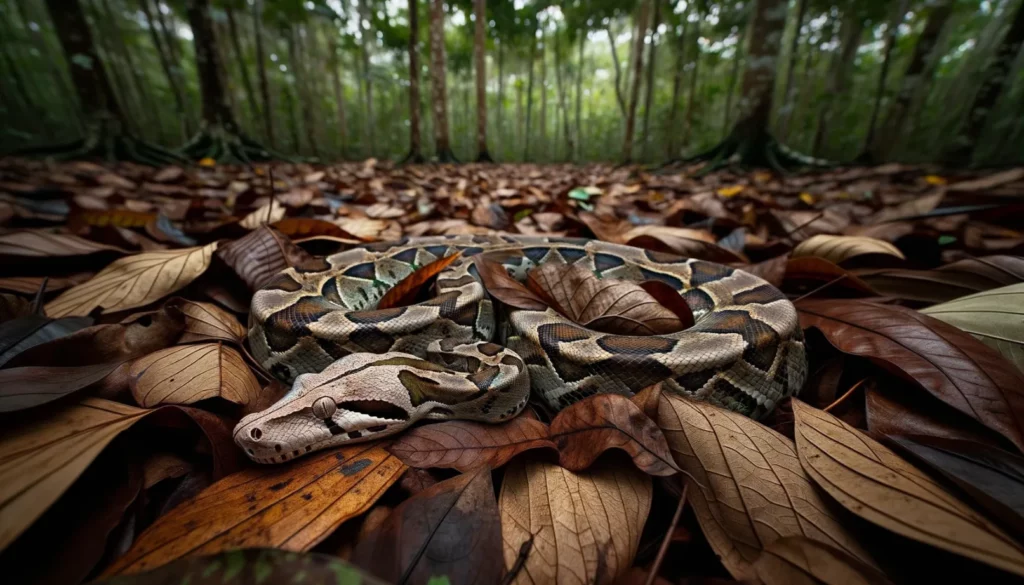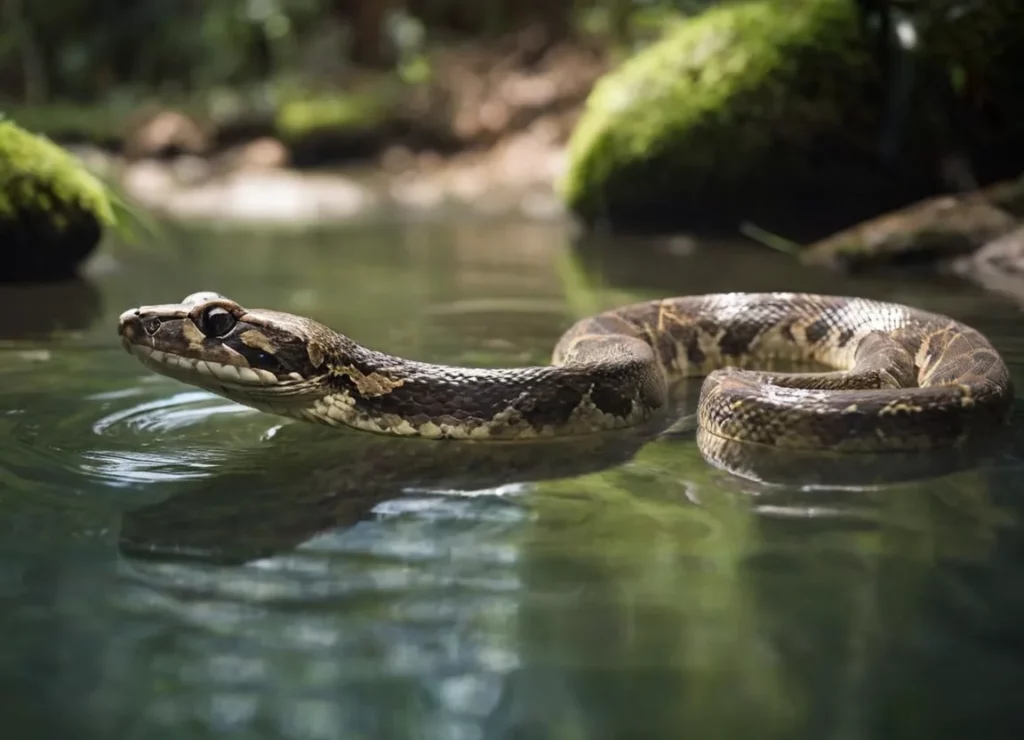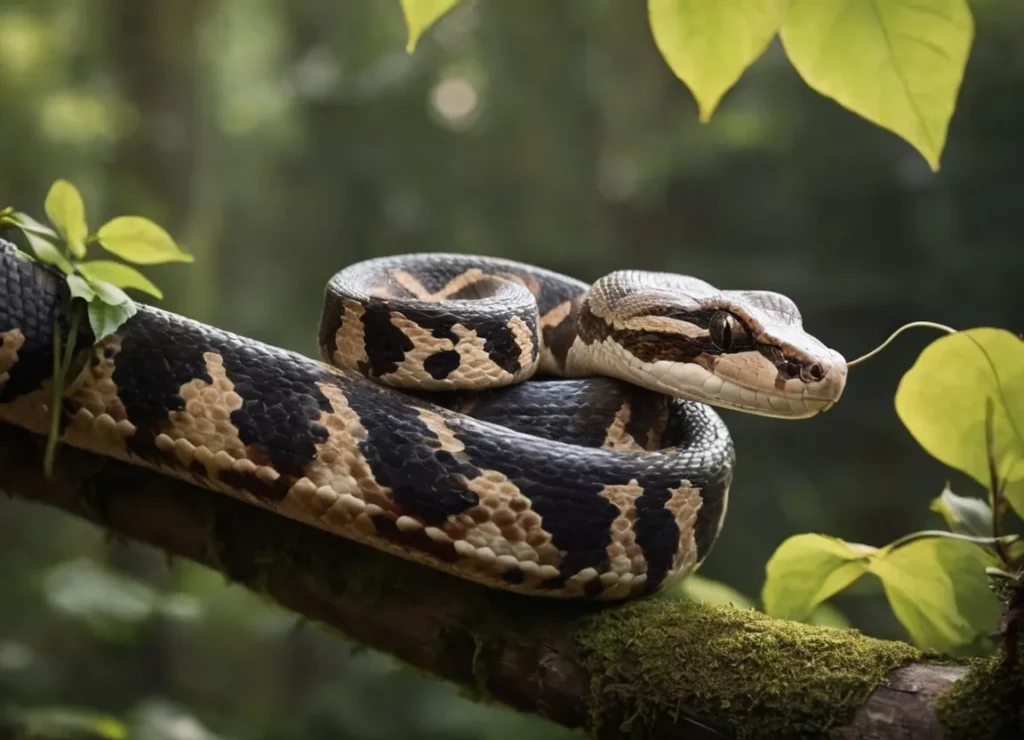18 Interesting Facts About Boa Constrictors

The boa constrictor is one of the most iconic snakes in the world. These huge, non-venomous serpents are known for their incredible size and strength. Though often villianized in movies and folklore, boa constrictors are fascinating creatures that play an important role in their ecosystems.
Here are 18 interesting facts about these powerful reptiles:
1. There’s Only One True Boa Constrictor Species

The term “boa constrictor” refers to over 40 different species of non-venomous constrictor snakes in the Boidae family. However, there is only one true boa constrictor species – the Boa constrictor. This species has several recognized subspecies:
- Red-tailed boa constrictor (Boa constrictor constrictor)
- Common Northern boa constrictor (Boa constrictor imperator)
- Mexican boa constrictor (Boa constrictor mexicana)
- And more
Other snakes like emerald boas and rosy boas may be called “boas” but are not actually Boa constrictors.
2. They Have Vestigial Legs
One of the most interesting facts about boa constrictors is that they still have vestigial hind legs left over from their evolutionary ancestors. These pelvic spurs are claw-like protrusions on their bellies that male boas use during mating. The remnants of legs likely help boas grasp and constrict prey as well.
3. Boas Give Live Birth
Unlike some snake species that lay eggs, boa constrictors are ovoviviparous. This means they retain eggs inside their bodies until they are ready to hatch, at which point they give birth to live young. Females can have litters of 10-65 baby boa constrictors at a time.
4. Their Teeth Point Backwards

Boa constrictors have curving, needle-like teeth designed to grip prey and prevent escape. The teeth point backwards into the snake’s mouth, acting like hooks that don’t let go once the boa bites down. If teeth break off, they can regrow them.
5. They Have Heat-Sensing Pits
Like pythons, boa constrictors have heat-sensing pits on their faces between their eyes and nostrils. These pits detect infrared radiation and allow boas to “see” heat signatures of nearby prey. This helps them hunt successfully at night or in dense vegetation.
6. Boas Can Reach Massive Sizes
Boa constrictors are among the largest snakes in the world. They average between 6.5-9.8 feet long but can potentially reach lengths over 13 feet. Females tend to be bigger than males. The biggest boa ever recorded measured an incredible 18.5 feet long, but was later found to be an anaconda.
7. Their Colors Help Camouflage Them
A boa constrictor’s color patterns act as effective camouflage in their natural habitats. They are generally tan, gray, or brown with darker “saddle” markings along their backs. As the tail reddens, the saddle marks get lighter and more defined. This provides cover as they blend into the rainforest floor.
8. Constrictors Don’t Suffocate Prey

It was long believed that boa constrictors suffocated animals to death by tightening around the chest, restricting breathing. But new research shows they actually use circulatory arrest – restricting blood flow to the brain and heart until the prey dies within seconds.
9. They Have an Incredible Hunting Range
From birds, bats, and opossums to pigs, deer, and monkeys, boa constrictors eat just about any vertebrate they can overpower. Thanks to their flexible jaws, prey up to a quarter of their body size can be consumed whole. After eating, they may not have to feed again for weeks.
10. Boas Can Go Months Without Food
Due to their slow metabolism, boa constrictors can survive on just a few large meals per year. It’s not unusual for them to go six months or longer without eating anything after devouring particularly big prey.
11. They are Solitary Creatures
Unlike other snake species, boa constrictors do not live in groups. They lead solitary lives, only coming together briefly for mating purposes. They are somewhat territorial, occupying their own home ranges. These can overlap with other boas, leading to some interactions.
12. Boas Give Birth to Independent Babies
Baby boa constrictors are totally independent from the moment they are born. They instinctively know how to hunt and take care of themselves without any teaching or parental care. Within their first few years, they shed skin regularly as they experience rapid growth.
13. Some Populations Are More Aggressive
Not all boa constrictors behave the same. Some regional populations, like those in Central America, tend to be more aggressive when disturbed. They may hiss loudly and strike repeatedly at a threat. South American boas are calmer and more tolerant of handling.
14. They Make Excellent Swimmers

Though they often live in trees near water, boa constrictors are also aquatic. Their muscular bodies allow them to swim efficiently across rivers, streams, and in coastal regions. This gives them access to a wide habitat range and prey diversity.
15. Boas Have a Long Lifespan
In the wild, boa constrictors live 20-30 years on average. Records show they can survive over 40 years in captivity with proper care and husbandry. This makes them a long commitment for pet owners.
16. They Are Covered in Unique Markings
No two boa constrictors have exactly the same patterning. Much like human fingerprints, their individualized markings make each boa unique. These can be especially vibrant and varied in captive-bred animals.
17. Boas Help Control Pest Populations

Though boa constrictors seem scary, they provide free pest control services in their natural habitats. By preying on rats, mice, opossums, and other nuisance animals, they help regulate populations that can damage human food supplies and spread disease.
18. Some Populations Are Under Threat
Though not currently endangered, some boa populations have declined due to hunting, habitat loss, and the exotic pet trade. They are listed on CITES Appendix II to monitor the effects of international trade on wild populations. Careful regulation helps preserve these majestic snakes.
Final Thought
Boa constrictors continue to fascinate people with their immense size, strength, and unique behaviors. Though they have a fearsome reputation, these intelligent predators are captivating creatures that play a vital ecological role across the Americas. Learning more about their biology can help instill an appreciation for these often misunderstood snakes.
While boa constrictors may seem intimidating at first glance, taking the time to understand them better can transform perceptions and breed admiration rather than fear. If treated with respect, perhaps these gentle giants can slither their way into more hearts.





